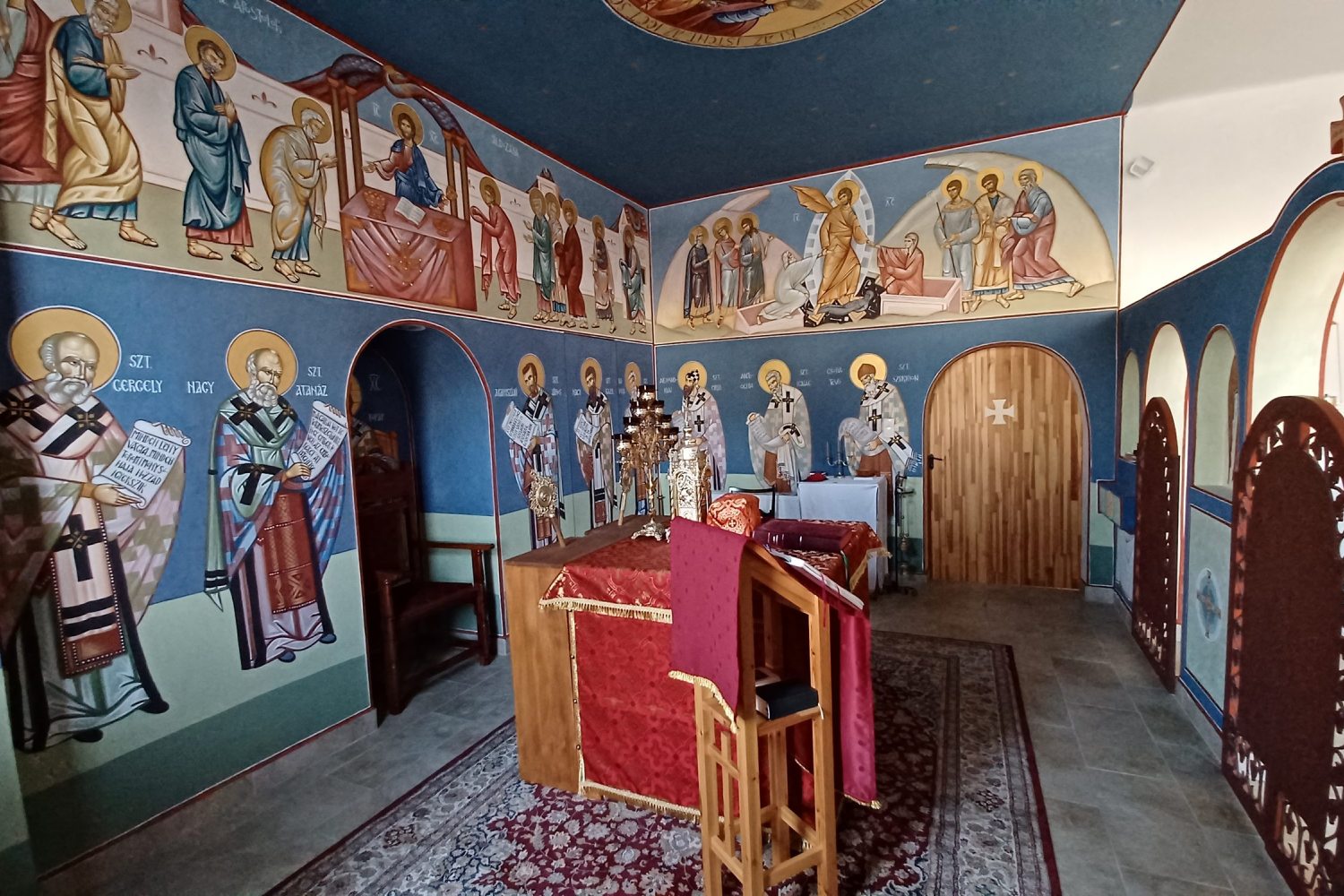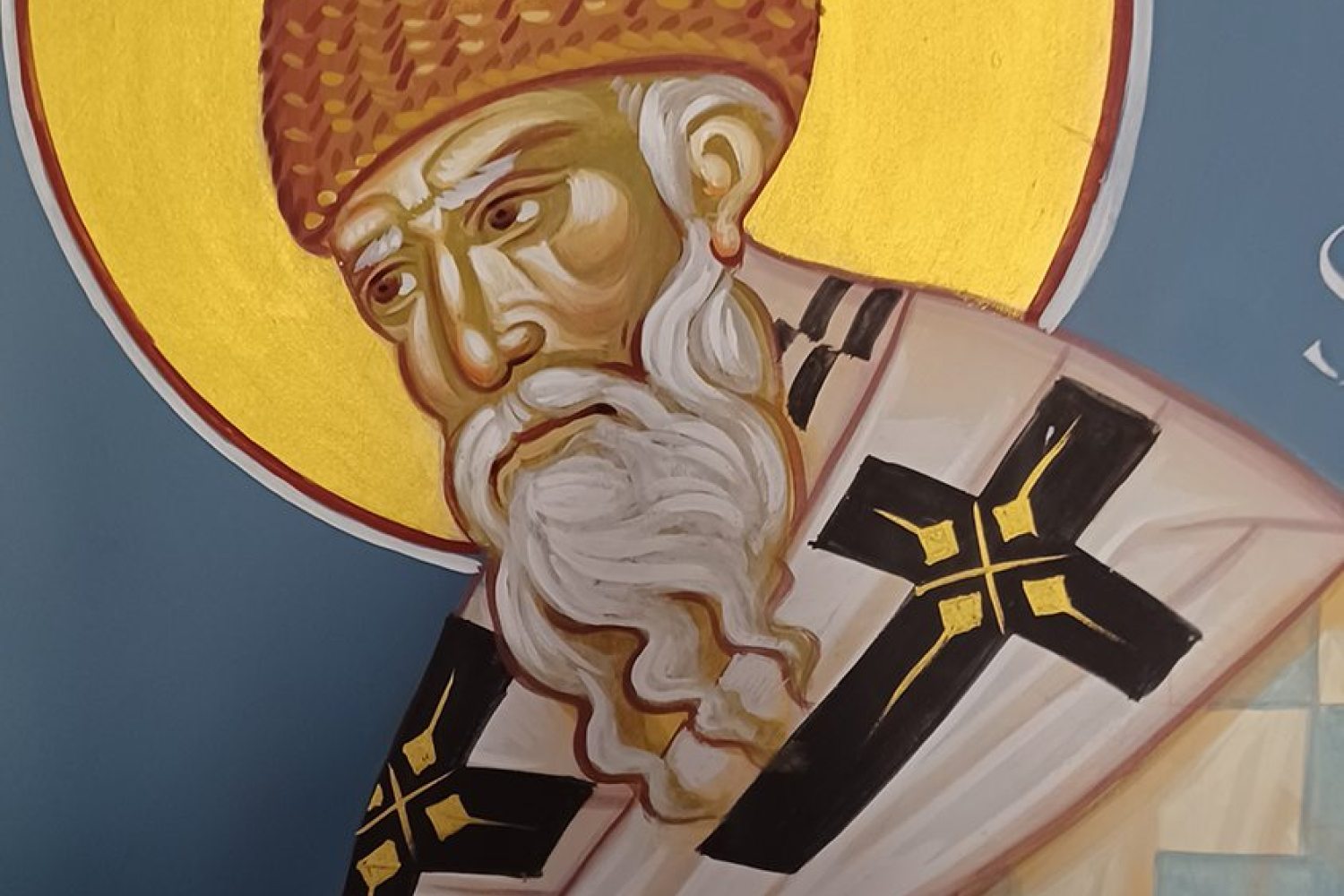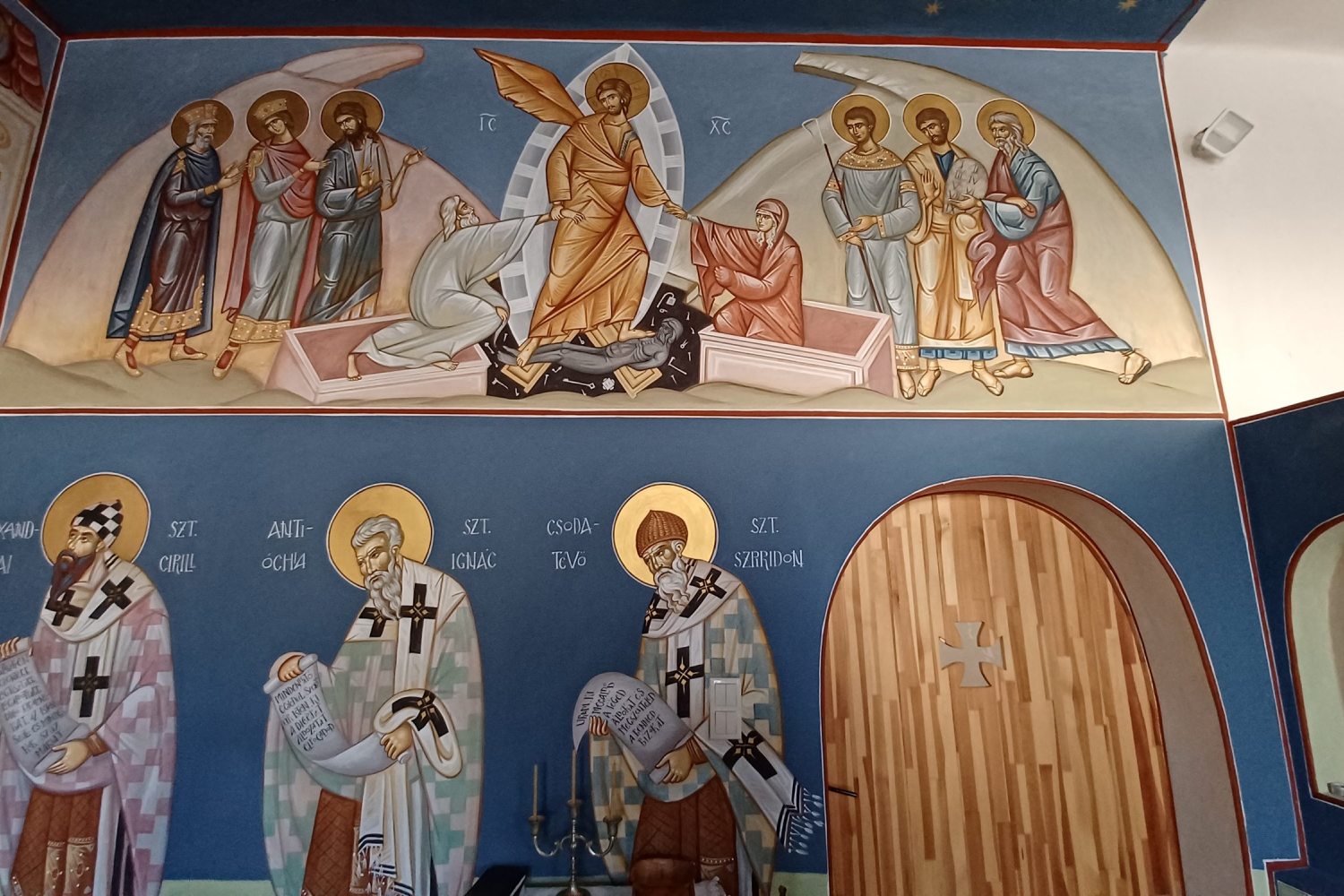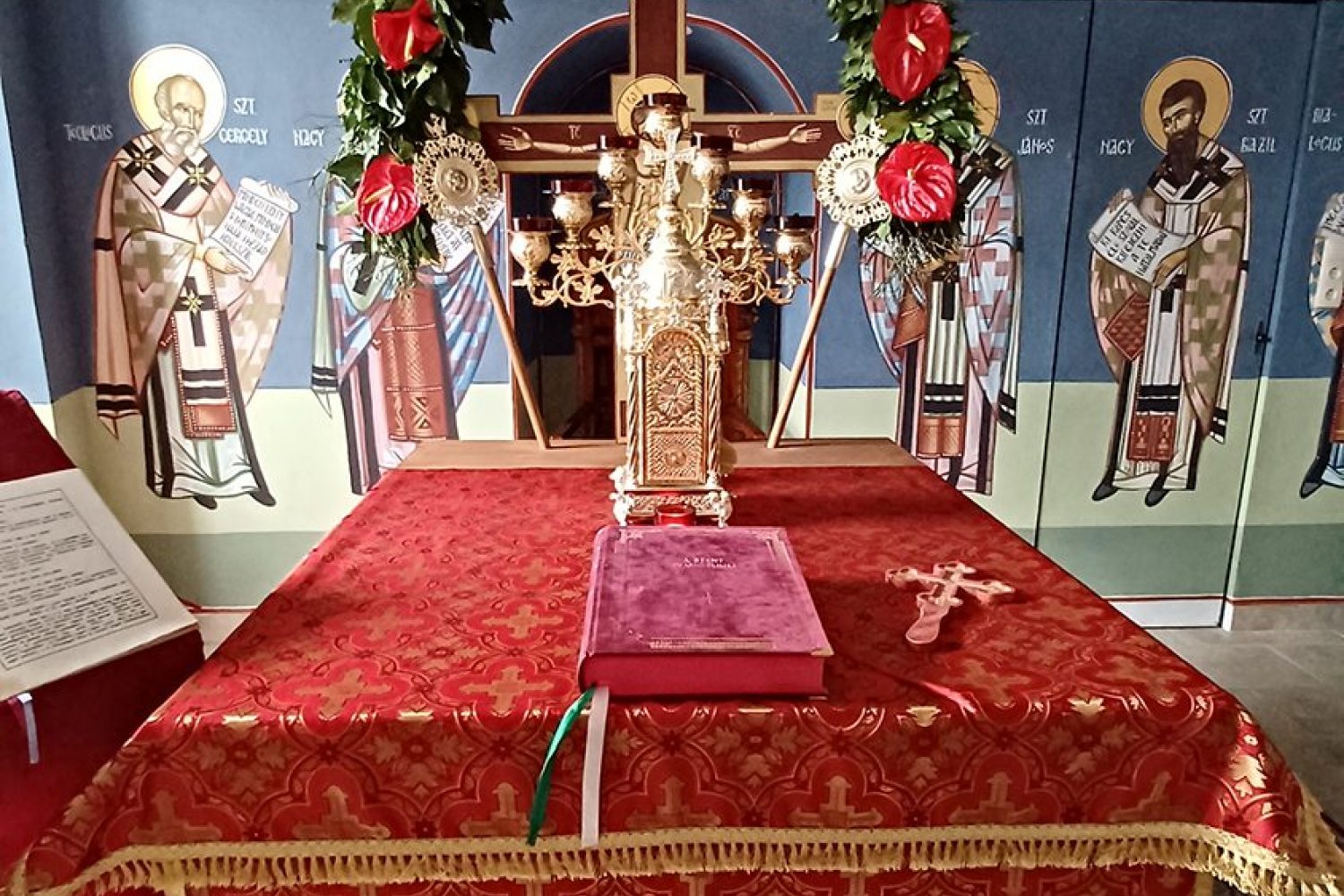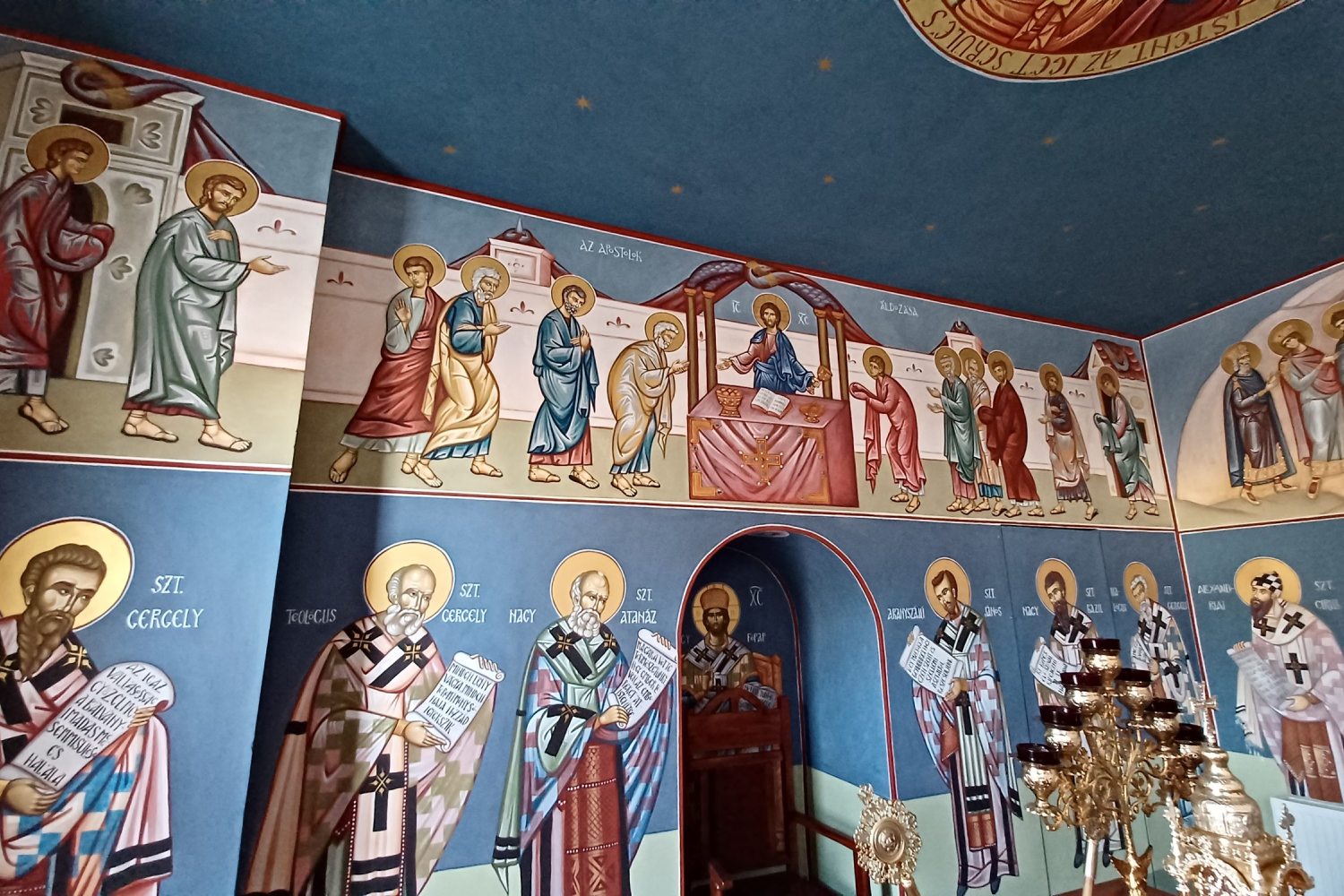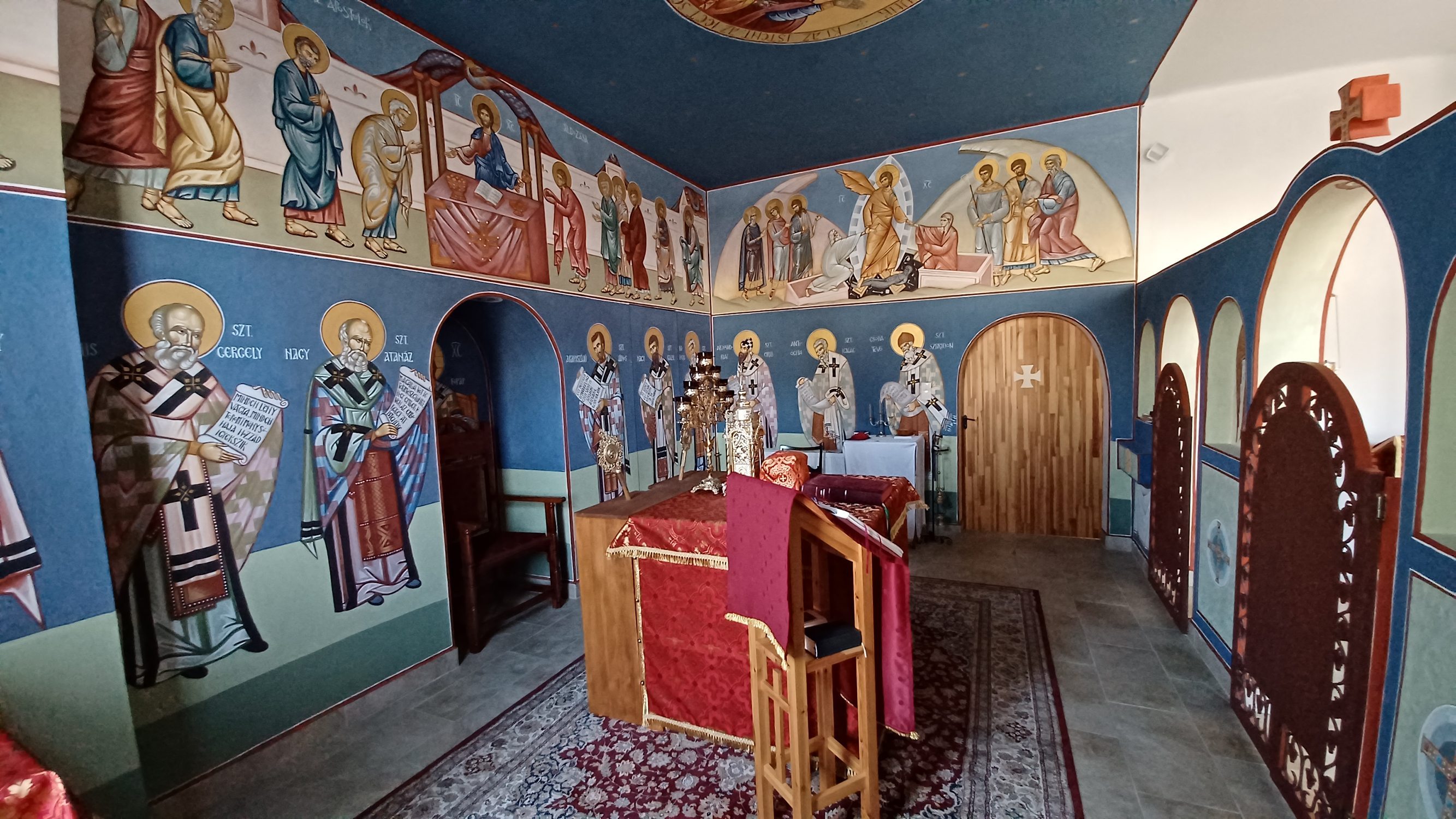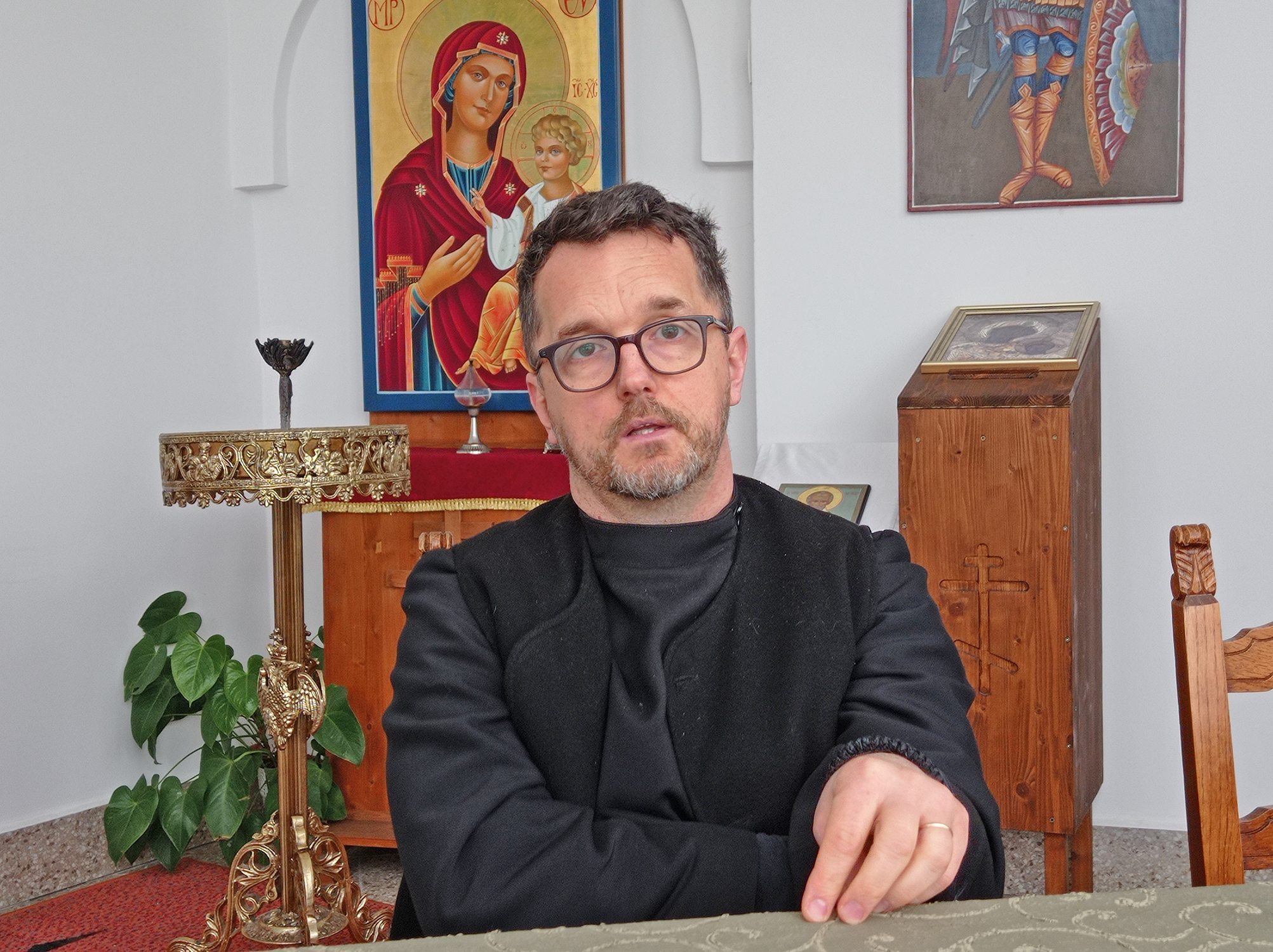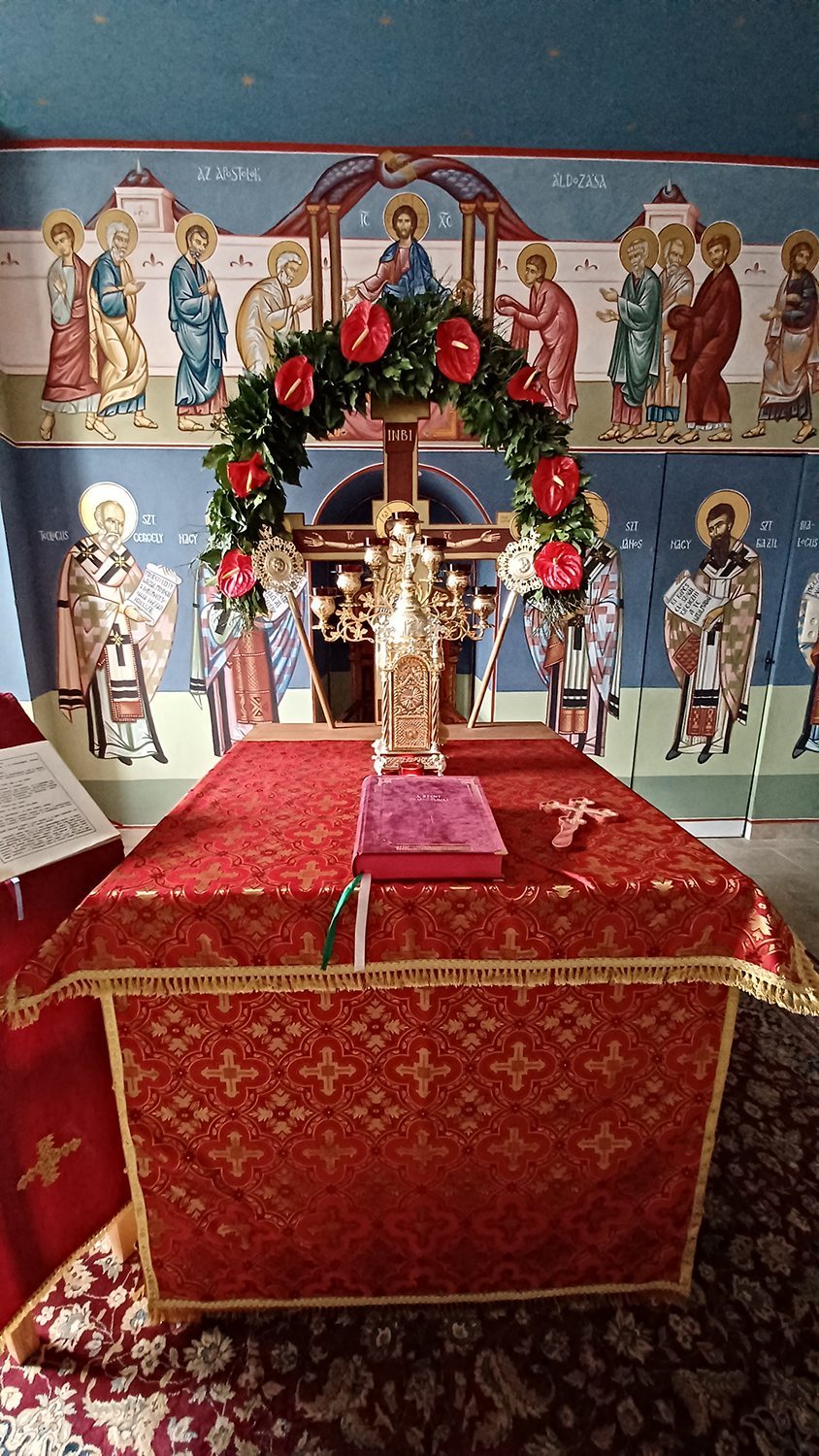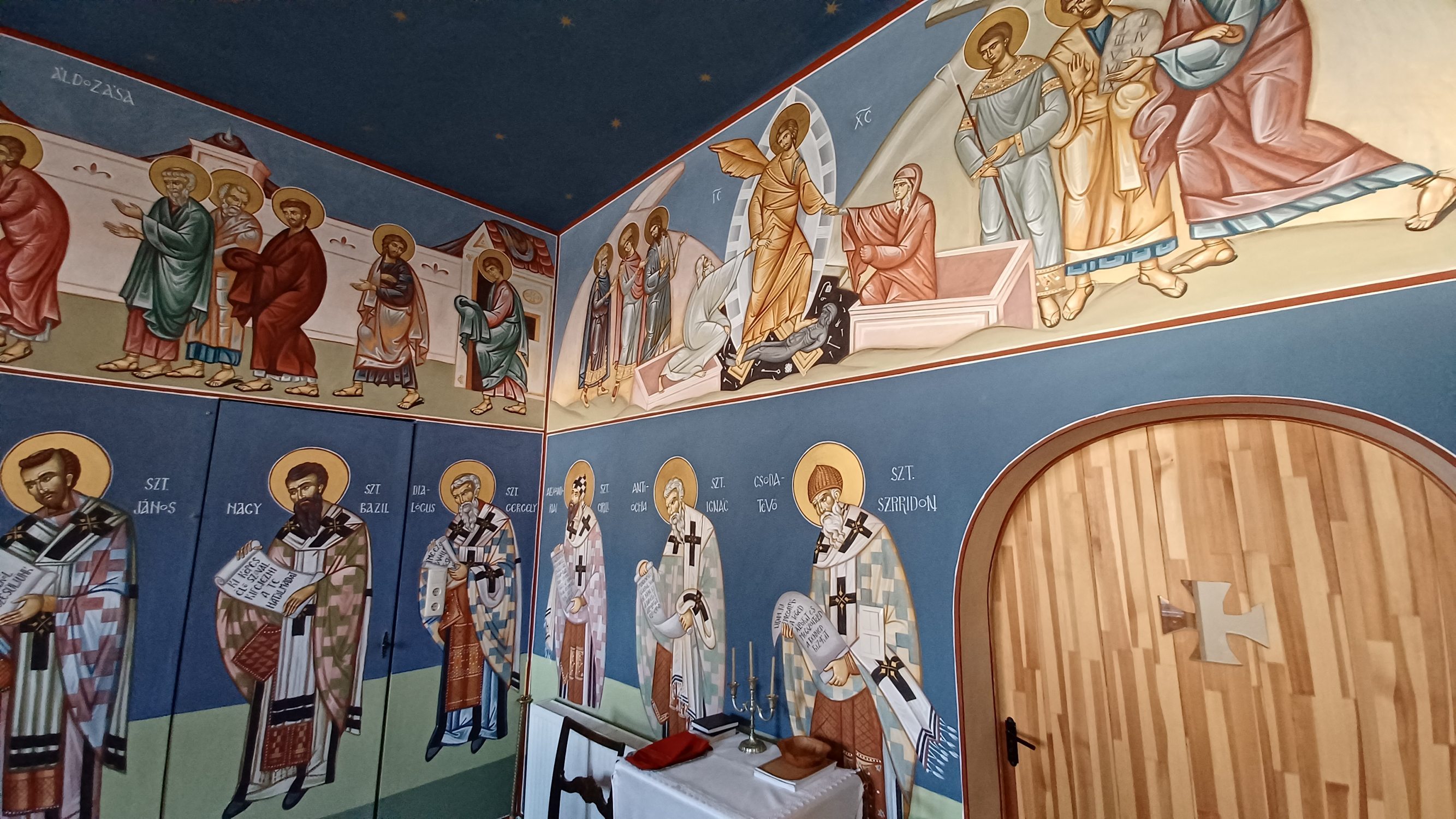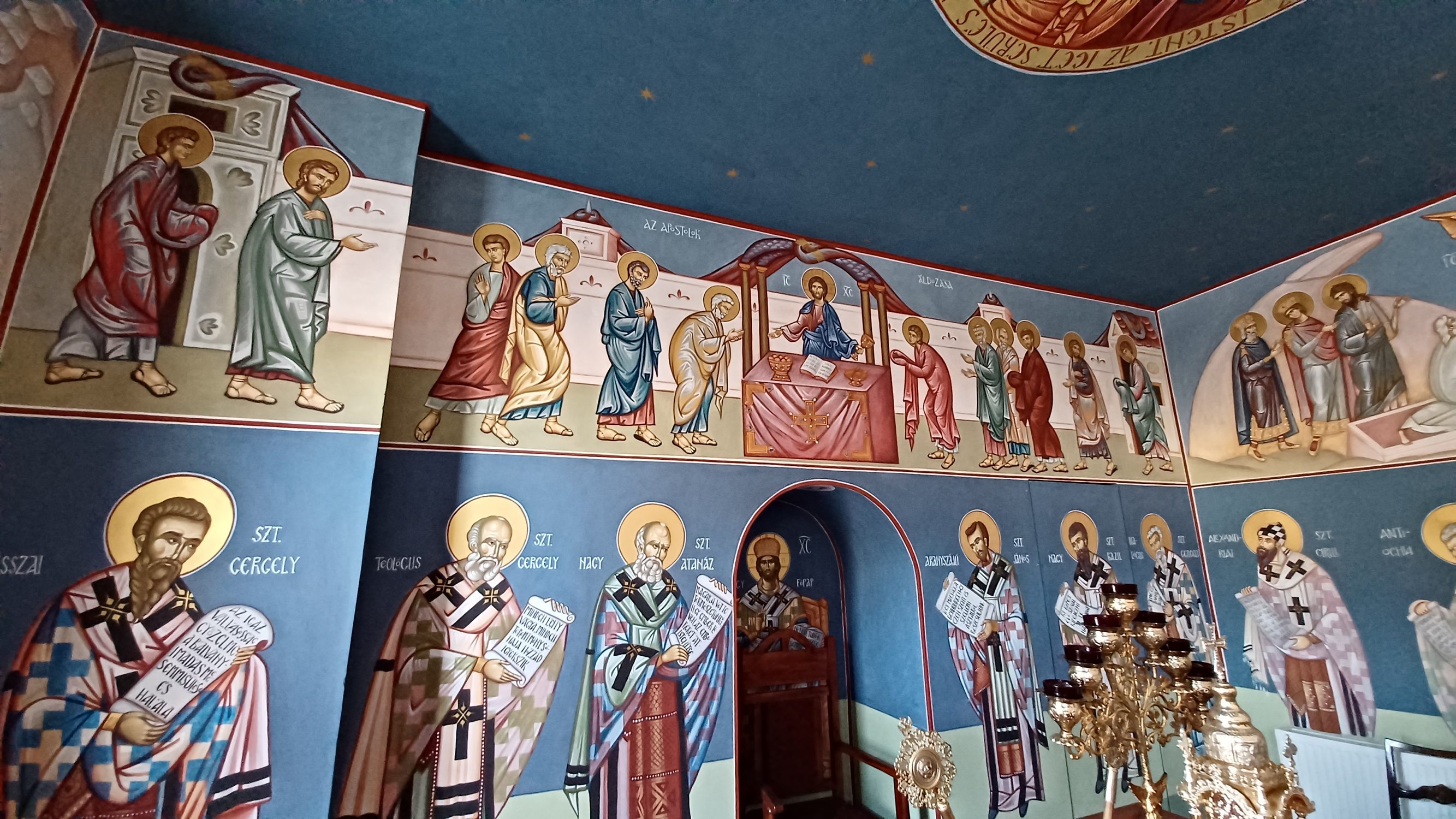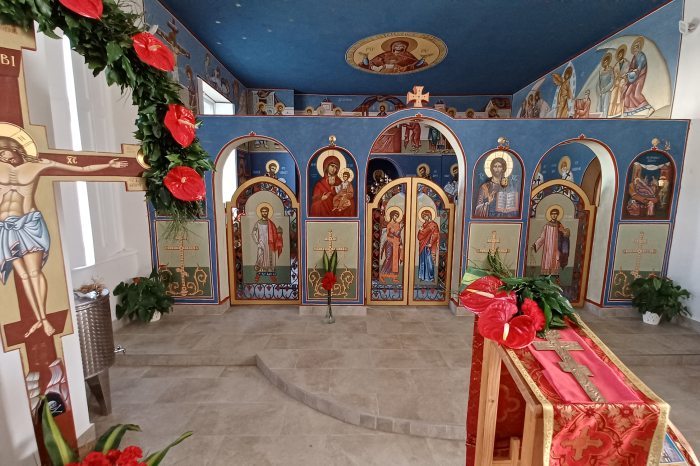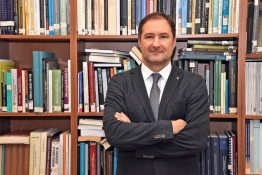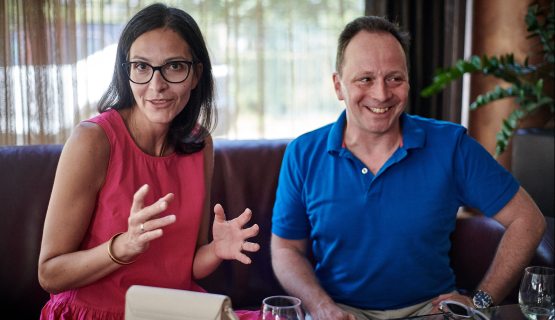“I paint the face of God because I believe that He became visible” – The icon painter deacon who also painted on Mount Athos
I enter through the door of a simple, battered family house. In the garden birds chirp, and in the chapel, made out of three rooms, there is holy silence. The deacon of the Eger Greek Catholic community, icon painter Mihály Vajda, welcomes me. He shows me the murals he has created with his own hands, all of which have a story to tell. I am amazed that he designed and painted every detail of the shrine himself. A deacon with a family, who has also visited Mount Athos, he creates murals and icons painted on wood in addition to his church ministry. We go back in time to the Egyptian mummy portraits, step into the early Christian incense-scented churches, and talk about the art of icon painting, faith, and calling.
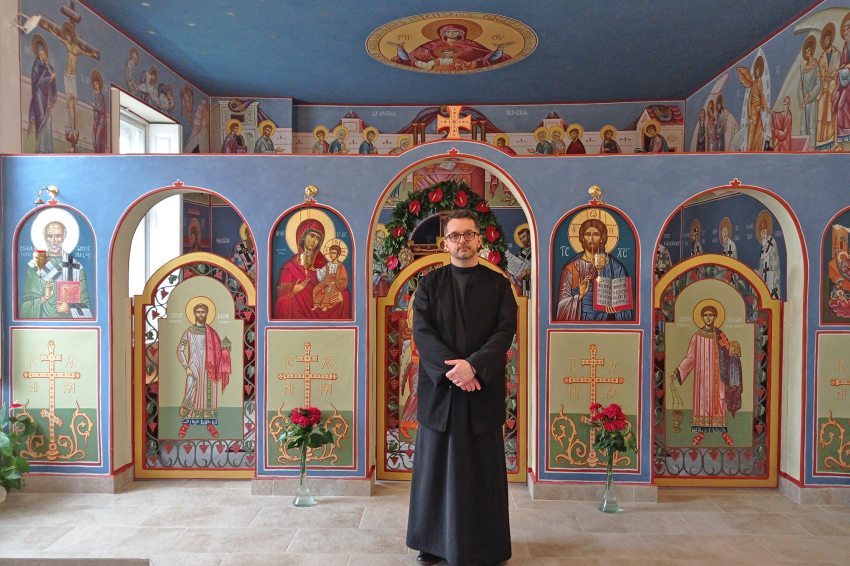
Was your path to deacon ministry straight from the start?
I grew up in a non-religious family, but I wasn't forbidden to go to church or to religious services. I stood at the altar, sang, and handled the incense, and the smell of it all seeped into me. Still, I drifted away for a while, and it was the Serbian Orthodox Church in Ráckeve that led me back into its sphere of attraction. When I entered, I could smell the incense emanating from the walls, and I realized how much I missed it. I became involved in the life of the Greek Catholic community in Budapest, studying theology and devouring the books of the Church Fathers to understand the teachings of the Church. Years later, I saw a deacon serving in the Orthodox Church in Petőfi Square, in Budapest. He had a charisma that impresses me to this day. In the Byzantine rite, the deacon faces the altar as well as the congregation during prayer and the reading of the liturgy, and he also burns incense. This role of being a mediator finds me in all aspects of my life, and it is in this that I experience unity. I try to serve as much as possible in the church, besides constantly painting. My wife, son and I live in a small loft apartment where I do not have a studio. I paint on the table we eat on.
How did you learn the art of icon painting?
I learnt from an icon painter in Athens, Dimitris Siregelas, who spent a few years in the Orthodox community in Budapest and we have been calling him back ever since. At first, I was approached by families and individuals. The really big turning point came in 2021 when icon painter and restorer Tamás Seres invited me to join his team to paint the Cathedral of Nyíregyháza.
I had to decide whether icon painting would remain a hobby for me or become a profession. I took a deep breath and said yes.
After Nyíregyháza we are now working in Miskolc, and the next project will be in Debrecen. I dedicate the time left to the murals of the Greek Catholic chapel in Eger, and I have a list of orders for icon panels at home.
What is the difference between paintings on wood and on a wall?
The theology and structure of the paintings are the same, but the technique is different depending on whether it is on wood, canvas or wall. The wood panel needs to be prepared - planed, primed, sanded - to provide a stable surface. We look for a prototype, a model, which is not always adaptable to church walls one by one. Serious design work has to precede it, to see the whole thing in one piece. In our chapel, we have only finished the painting of the sanctuary, but I already have the whole wall surface in my head. Ideally, we sketch it out on cardboard beforehand and work out the colours. In reality, it will need constant adjustment according to the incoming light. If you are working in a church scale, you will need to paint more emphatically, with larger strokes, to make it look effective from below.
What are the roots of icon painting?
The direct forerunners of icons are the Egyptian mummy portraits. The portrait, painted on a wooden panel, was placed on the mummy so that the soul would recognise the body when it returned. The oldest mural paintings are found in the west, because in Byzantium, during the decades of iconoclasm, the paintings were whitewashed, the mosaics were destroyed and the icons were shattered. But the Pope protected the icon worshippers. That is why we can say that icons are not only the treasures of the Eastern Church, but also of the universal Church, that is, our common heritage. When you enter an early medieval church in Serbia, Greece or Italy, you almost don't know whether you are in an Orthodox or a Catholic building. The key to unity is rooted in the past, in the one thousand years when the Church was undivided. Iconoclasm has implanted in the soul of the Eastern Church that it is not just acceptable to depict the saints, but necessary.
If I believe that God has come into the world and has been made visible in Christ, then I proclaim it not just in words and deeds, but also in pictures and colours.
What role do creativity and the personality of the artist play in icon painting?
In contemporary art the individual expresses themselves, but in icon painting, they adapt. It is not the artist who is important, which is why we do not sign our works. The great icon painters are identifiable, we admire their individuality and style, but they have always remained within the traditional framework. When a choir sings ancient Byzantine hymns, individual virtuosity is not appropriate. In the same way, we try to stick to the tradition in which the images were conceived because in many cases they contain the texts of the ceremonial ritual. In fact, the sacred act and movements of the liturgy are expressed in colour. That is why we need to understand the rites and join in the prayer of the Church. The icon is essentially a creed. I paint the face of God because I believe that He became visible.
They say that painting the image of God and the saints is not only a work of art but also a prayer.
Prayer definitely, but where I am now, it's more of a challenge, a focused activity. But it is important for the icon painter to live the life of the Church, to be involved in her prayers, fasting and feasts.
How long does it take to complete a piece of art?
A face can be done in a day or two, but a scene is more complex; sometimes it takes weeks. I like working in stages; putting it down and then picking it up again in a week or two, looking at it with fresh eyes. I work on several icons at the same time.
You mentioned the restrictions of representation. What can be known about the symbolism of colours?
Not every colour has a meaning in every setting. Of the apostles, Peter's outer garment is usually ochre-brownish-green, which is how he can be identified.
The crimson of Christ's garment represents the divine nature, the blue the human. His lower garment is always crimson, his upper garment blue, because He is God who has taken on human nature.
The Madonna, on the other hand, has the colours reversed, because she is human, but she has assumed the divine nature. In Syrian icons, the Madonna is usually depicted in pure blue, because in the Syrian tradition blue is the colour of motherhood. There are many different schools of icon painting, but the basics are common.
What is the role of gold?
On the one hand, gold expresses appreciation that we want to offer something of value. Gold in the halo, in the background or on the clothes can be used to express the presence of the uncreated light that surrounds the saint. Gold goes beyond colours, compared to them it is transcendent.
What paint do you use?
The wooden panels are traditionally painted with egg tempera, using egg yolk as a fixative. We add water, white wine vinegar, and mainly mineral pigments. I also like to work with more modern materials, such as acrylic on canvas. In the church in Nyíregyháza we painted with silicate, a relatively new technique. It resists UV light well, it doesn't fade, and the colour is durable. In appearance, it resembles a fresco, but it does not require wet plaster. However, it is essential to have practice in designing the colours, as they appear significantly lighter when dry.
The monks of the mysterious monasteries of Mount Athos are the guardians of the tradition of icon painting. Have you been there?
My Master once allowed me to work with him on the Holy Mountain. I was able to spend six days at the Simonos Petras monastery.
I helped him paint the primary colours, the so-called seven-colours, and gave myself over to the very special atmosphere that embraces you there.
Athos is a thousand-year-old monastic state with large monasteries and nearly two thousand monks. I was able to join in their prayers, which began at four in the morning. We worked, prayed, and occasionally made pilgrimages to other monasteries. I also met a Hungarian father whom I asked about the Prayer of the Heart. It was an unforgettable experience.
What comes to your mind when you look at the painted walls of churches?
The saints stand before us as examples. They look at us from the walls of the church and point the way. We too are invited to join them. This is one of the messages of the icons.
